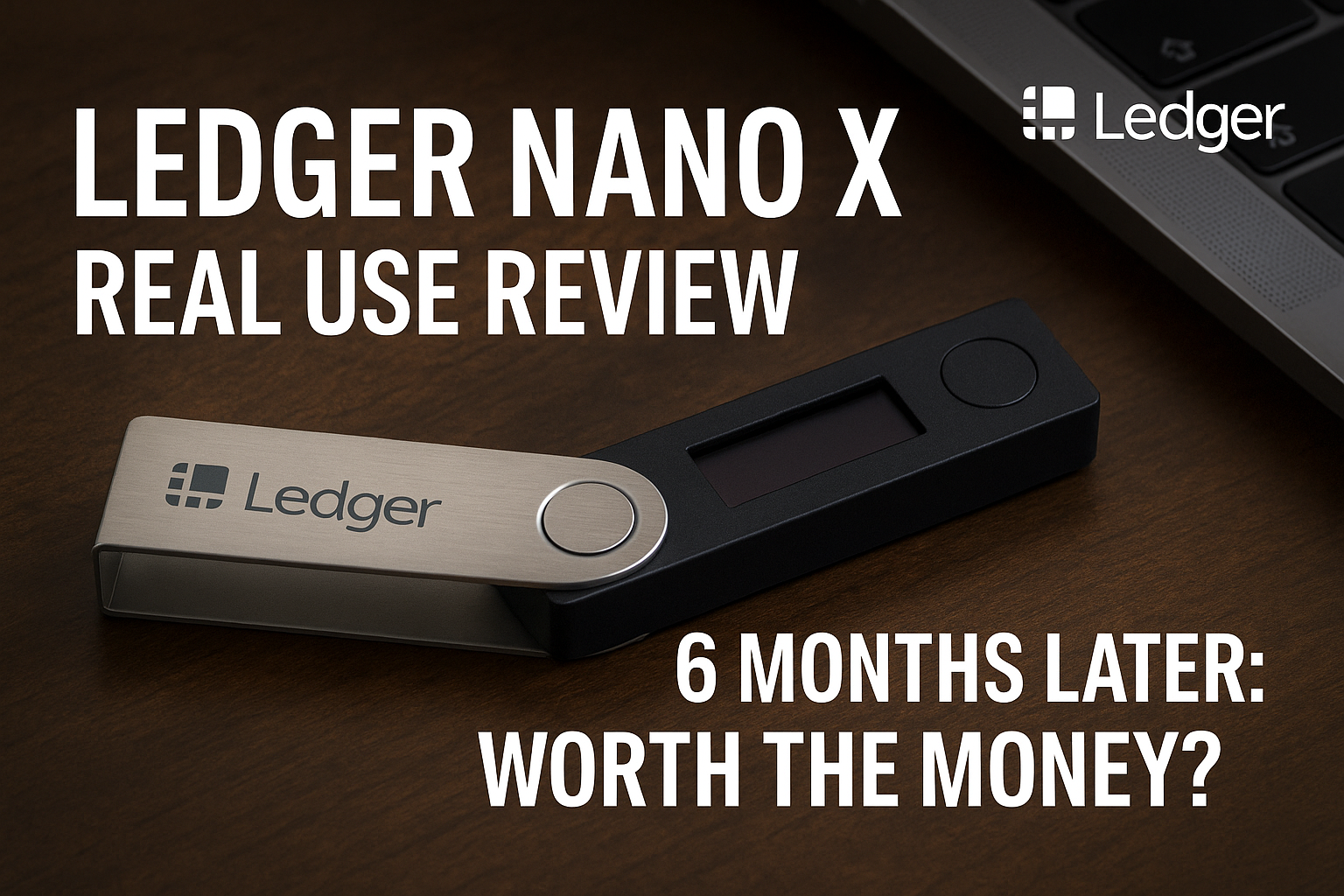Introduction
When I first started investing in cryptocurrency, I kept everything on exchanges. It felt convenient until I realized how vulnerable my assets were. Six months ago, I purchased the Ledger Nano X, one of the most popular hardware wallets on the market, to take control of my crypto security. After half a year of real-world use, I’m sharing my honest experience. If you’re wondering whether the Ledger Nano X is still worth buying in 2025, this deep dive is for you.
What Is the Ledger Nano X?
The Ledger Nano X is a Bluetooth-enabled hardware wallet designed to store your crypto assets offline. It supports over 5,500 tokens, including Bitcoin, Ethereum, and most ERC-20 tokens. Unlike hot wallets connected to the internet, hardware wallets like this one provide an extra layer of security by storing your private keys offline.
Why I Bought It
I wanted peace of mind. Between exchange hacks and phishing attacks, I needed something reliable. I chose the Ledger Nano X for a few key reasons:
- Bluetooth connectivity (works with mobile Ledger Live app)
- Large storage (up to 100 apps installed simultaneously)
- Support for staking on networks like Tezos, Polkadot, and Ethereum
- Reputation – Ledger has been around since 2014
Setup and First Impressions
Setting it up took about 20 minutes. The onboarding via Ledger Live was smooth, though beginners might feel a bit overwhelmed with the steps (write down your 24-word seed phrase, verify the device, etc.). Bluetooth pairing worked seamlessly with my iPhone.
What I liked:
- Clear screen and simple UI
- Ability to manage multiple assets in one place
- Ledger Live desktop and mobile apps are user-friendly
What felt annoying:
- Clicking two buttons to confirm every action felt tedious
- No touch screen (especially considering the price)
6 Months Later: My Real Experience
After six months of using the Ledger Nano X regularly, here’s the honest truth:
The Good:
- It still works flawlessly. I use it 2-3 times per week to approve transactions or check balances.
- No firmware issues or bugs so far.
- Bluetooth connectivity remains stable.
- I’ve used it for staking ETH and DOT, and the integration with Ledger Live is smooth.
The Bad:
- Battery life has noticeably declined. I need to recharge it every 10–15 days now (vs once a month initially).
- Device can’t be used while charging. Minor but annoying.
- Limited screen space makes some transaction verifications difficult to read.
Is It Still Worth Buying in 2025?
If you hold over $1,000 in crypto, then yes — it’s absolutely worth it. Here’s why:
- Security is unmatched vs hot wallets
- Still one of the few devices supporting multiple staking assets natively
- Regular firmware updates from Ledger
However, if you mostly trade small amounts or don’t plan to hold long-term, a cheaper model like the Ledger Nano S Plus or even a software wallet might be more cost-effective.
(View Ledger Nano S Plus on Ledger’s official site or check on Amazon below.)
What Other Users Say
“I’ve had the Nano X for over a year. Still reliable, but I wish the battery held up better.” — Reddit/r/ledgerwallet
“Best peace of mind for my BTC savings. I won’t ever store on exchanges again.” — Ledger customer
“Firmware updates are frequent and reliable. UI is getting better.” — Reddit/r/cryptowallet
Pros & Cons Recap
| ✅ Pros | ⚠️ Cons |
|---|---|
|
✅ Excellent security (offline private key storage) ✅ Easy mobile + desktop access ✅ Supports 5,500+ assets ✅ Bluetooth and staking-ready |
⚠️ Battery declines with time ⚠️ Not usable while charging ⚠️ No touchscreen |
Final Verdict
After six months of personal use, I still believe the Ledger Nano X is one of the best hardware wallets available in 2025. It’s not perfect, but its balance of security, usability, and mobile features make it ideal for long-term holders.
If you’re serious about crypto, don’t wait until something bad happens. Own your keys. Protect your future.
Thinking of Getting the Ledger Nano X?
This post includes affiliate links. If you purchase through them, I might receive a small commission at no extra cost to you — thank you for your support!
Further Reading:



